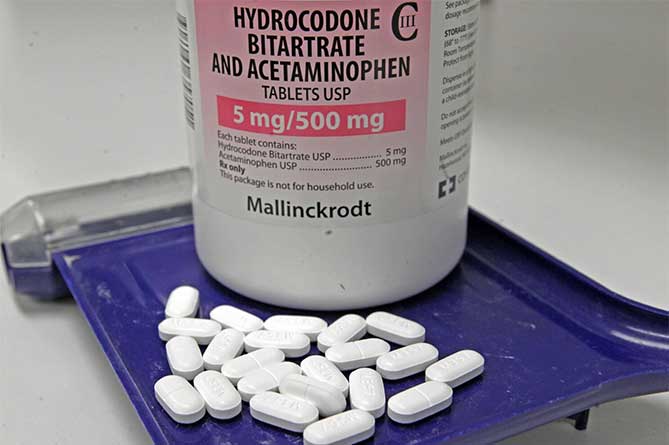Hydrocodone Dosage | Proper Use Vs. Abuse
To properly use hydrocodone to treat moderate to severe pain, follow the advice of your prescribing doctor. Due to the effects of opioids, some may choose to abuse this drug by taking a higher dose of hydrocodone than prescribed.

Hydrocodone, known by a number of brand names such as Vicodin, Lortab, and Norco, is an opiate analgesic and central nervous system (CNS) depressant used to help manage chronic pain. Hydrocodone is offered in combination products such as hydrocodone/acetaminophen.
This opioid analgesic prescription drug is a Schedule II controlled substance with a high potential for abuse.
If you have been prescribed hydrocodone by your healthcare provider, the medication should be used as prescribed by taking your recommended dosage.
Hydrocodone Dosage & Proper Use
The proper use of hydrocodone is to take it as prescribed by a doctor. The dose prescribed may depend on if you’re suffering from moderate or severe pain.
The severity of your medical condition may determine the dosage form of hydrocodone you receive. In addition to this, the proper use of hydrocodone consists of storing the drug at room temperature and following the box warning.
Daily Dosage For Hydrocodone/Acetaminophen Products
According to the United States Food and Drug Administration (FDA), hydrocodone 5 mg/325 mg tablets contain 5 mg of hydrocodone bitartrate and 325 mg of acetaminophen.
This is the usual daily dose for adults which is given every 4 to 6 hours as needed. No more than 8 tablets should be taken within 24 hours.
Extended-Release Dosage
Hydrocodone is offered in an extended-release capsule for pain relief as well. An oral solution is provided and contains hydrocodone 7.5 mg and acetaminophen 325 mg/15 mL.
Common Side Effects
Although hydrocodone may prove beneficial for those suffering from pain, the medication ultimately can cause a number of side effects. According to the National Institute on Drug Abuse (NIDA), some of the common side effects of hydrocodone may include:
- sedation
- feelings of euphoria
- drowsiness
- constipation
- lightheadedness
- nausea
- slowed breathing
To avoid adverse reactions, women who are pregnant or breastfeeding should avoid this prescription medication, as the drug may pass to the child via the mother’s breast milk.
Those with a family history or personal history of hepatic or renal impairment and those with kidney or liver disease may need to avoid hydrocodone. If you have ever acquired a head injury, speak with your doctor before taking hydrocodone.
Hydrocodone Abuse
Hydrocodone abuse occurs when you take the drug without a prescription, take higher doses than prescribed, or mix hydrocodone with alcohol or other drugs.
When hydrocodone is routinely taken in high doses, it can lead to adverse effects such as physical dependence and withdrawal as well as life-threatening health problems.
Dependence & Withdrawal
After a period of hydrocodone abuse, abruptly stopping use may cause physical dependence and opioid withdrawal syndrome. This can lead to hydrocodone withdrawal symptoms such as irritability, fluctuations in heart rate, and a loss of appetite.
While not life-threatening, opioid withdrawal symptoms can lead to further drug use and the development of substance use disorder or addiction.
Polydrug Use
Drug interactions may occur when hydrocodone is used alongside other substances. Some of the substances to avoid while taking this drug include:
- other pain medications
- pentazocine
- muscle relaxants
- barbiturates
- butorphanol
- alcohol
- benzodiazepines
- supplements
- other CNS depressants
- other opioids such as codeine, hydromorphone, or oxycodone
- antidepressants such as monoamine oxidase inhibitors (MAOIs)
Intentionally mixing hydrocodone with these substances may increase the effects of sedation, as well as the risk of fatal overdose.
Hydrocodone Overdose
Per the FDA, a person who abuses hydrocodone is at a higher risk of developing hydrocodone toxicity or a hydrocodone overdose. An opioid overdose may include the following symptoms:
- hearing impairment
- tremors
- cardiovascular collapse
- seizures or convulsions
- respiratory depression
- coma
To help treat an overdose, naloxone may be used by an emergency healthcare professional or someone nearby. This medication is used to help reverse the symptoms of an opioid overdose.
If you or a loved one struggle with prescription opioid abuse, please contact us today for information on inpatient and outpatient treatment options.
- National Institute on Drug Abuse https://nida.nih.gov/publications/drugfacts/prescription-opioids
- National Library of Medicine: MedlinePlus https://medlineplus.gov/druginfo/meds/a614045.html
- National Library of Medicine: MedlinePlus https://medlineplus.gov/ency/article/002670.htm
- National Library of Medicine: MedlinePlus https://medlineplus.gov/druginfo/meds/a601006.html
- United States Drug Enforcement Administration https://www.deadiversion.usdoj.gov/drug_chem_info/hydrocodone.pdf
- United States Food and Drug Administration https://www.accessdata.fda.gov/drugsatfda_docs/label/2019/040099s023lbl.pdf

